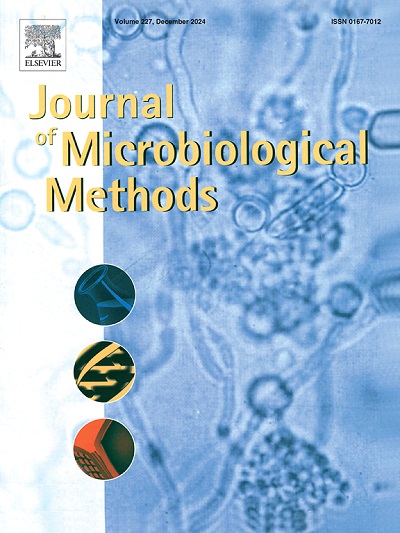Optimizing α-amylase production by an extremely halophilic archaeon Haloferax mucosum MS1.4, using response surface methodology
IF 1.7
4区 生物学
Q4 BIOCHEMICAL RESEARCH METHODS
引用次数: 0
Abstract
This study investigated α-amylase production potential of the haloarchaeal strain Haloferax mucosum MS1.4 (NCBI GenBank Acc. No. OL780830), isolated from a solar saltpan located in Tamil Nadu, southern India. The enzyme was partially purified and characterized, employing SDS-PAGE analysis indicating a molecular mass of approximately 67 kDa. In order to optimize the conditions for maximizing α-amylase production, a two-step statistical approach was adopted. The initial phase involved using a Plackett-Burman Design (PBD) to determine the primary factors affecting enzyme production. PBD identified incubation time, starch concentration and NaCl concentration as the most significant variables influencing enzyme yield. These factors were further optimized using Box-Behnken Design (BBD) under Response Surface Methodology (RSM). Maximum α-amylase production of 955.97 units min−1 was obtained under the optimized conditions of 1.62 % starch; 29.88 % NaCl and an incubation period of 144 h (6 days). The findings highlight the potential of H. mucosum MS1.4 as a promising candidate for industrial enzyme production under high-saline conditions.

利用响应面法优化极嗜盐古菌MS1.4生产α-淀粉酶
本研究研究了嗜盐古菌菌株Haloferax mucosum MS1.4 (NCBI GenBank Acc) α-淀粉酶的产酶潜力。否。OL780830),从位于印度南部泰米尔纳德邦的一个太阳能盐田中分离出来。对该酶进行了部分纯化和表征,利用SDS-PAGE分析表明其分子质量约为67 kDa。为了优化α-淀粉酶产量最大化的条件,采用两步统计方法。初始阶段使用Plackett-Burman设计(PBD)来确定影响酶生产的主要因素。PBD发现,培养时间、淀粉浓度和NaCl浓度是影响酶产率最显著的变量。采用响应面法(RSM)下的Box-Behnken设计(BBD)对各因素进行优化。在淀粉含量为1.62%的优化条件下,α-淀粉酶产量最高,为955.97单位min−1;NaCl含量为29.88%,孵育时间为144 h(6天)。这些发现突出了H. mucosum MS1.4作为高盐条件下工业酶生产的有希望的候选者的潜力。
本文章由计算机程序翻译,如有差异,请以英文原文为准。
求助全文
约1分钟内获得全文
求助全文
来源期刊

Journal of microbiological methods
生物-生化研究方法
CiteScore
4.30
自引率
4.50%
发文量
151
审稿时长
29 days
期刊介绍:
The Journal of Microbiological Methods publishes scholarly and original articles, notes and review articles. These articles must include novel and/or state-of-the-art methods, or significant improvements to existing methods. Novel and innovative applications of current methods that are validated and useful will also be published. JMM strives for scholarship, innovation and excellence. This demands scientific rigour, the best available methods and technologies, correctly replicated experiments/tests, the inclusion of proper controls, calibrations, and the correct statistical analysis. The presentation of the data must support the interpretation of the method/approach.
All aspects of microbiology are covered, except virology. These include agricultural microbiology, applied and environmental microbiology, bioassays, bioinformatics, biotechnology, biochemical microbiology, clinical microbiology, diagnostics, food monitoring and quality control microbiology, microbial genetics and genomics, geomicrobiology, microbiome methods regardless of habitat, high through-put sequencing methods and analysis, microbial pathogenesis and host responses, metabolomics, metagenomics, metaproteomics, microbial ecology and diversity, microbial physiology, microbial ultra-structure, microscopic and imaging methods, molecular microbiology, mycology, novel mathematical microbiology and modelling, parasitology, plant-microbe interactions, protein markers/profiles, proteomics, pyrosequencing, public health microbiology, radioisotopes applied to microbiology, robotics applied to microbiological methods,rumen microbiology, microbiological methods for space missions and extreme environments, sampling methods and samplers, soil and sediment microbiology, transcriptomics, veterinary microbiology, sero-diagnostics and typing/identification.
 求助内容:
求助内容: 应助结果提醒方式:
应助结果提醒方式:


